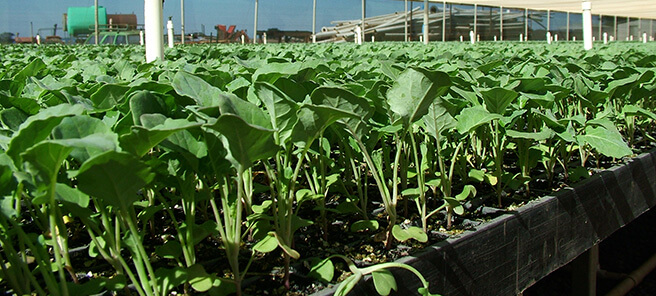The sensitivity of individual crops and varieties to temperature is likely to be the most important single direct effect of climate change and increased variability on the vegetable industry. In addition to warmer temperatures, there is the expected increase in the variability of extreme weather events including heatwaves. These combined effects are likely to mean major changes in where vegetables can be grown and how growers deal with extreme events.
To some extent, these effects may be countered by seed companies breeding new varieties with wider optimal temperature ranges or better heat tolerance. However, while there is some capacity within current and future varieties to adapt to changed conditions, this capacity is not great. Some crops are already growing at the upper or lower end of their acceptable temperature ranges. Moreover, climate change is not currently driving research by the major seed companies on extending the temperature range of vegetable crop varieties.
It is also possible there will be interactions between higher temperatures and higher CO2 levels on the way vegetable varieties respond to a more variable climate, and this could be a potential area for future research. Some useful data may come from greenhouse research, where vegetable crops such as tomatoes, capsicums and cucumbers are commonly grown in glasshouses under CO2 enrichment, especially in Europe.
In Australia we do not breed many of our vegetable varieties. The exceptions are lettuce by Enza, broccoli by Clause and some cooperative breeding by Rijk Zwaan. Screening varieties in hot conditions or under passive heat tunnels could help determine temperature tolerances for genotypes that suit Australian markets. Such assessments are already underway for some of Australia’s broad acre crops, e.g. wheat.
Crops for which variety selection will be a solution
Capsicums: AVRDC is currently breeding for heat tolerance, but new varieties will be in the long term.
Beans: Breeding is underway for heat and drought tolerance – long-term solution.
Lettuce: Monsanto and Clause are both breeding for heat tolerance. Breeding for cold tolerance is also underway for southern Australia and New Zealand.
Cauliflower: Breeding is active, using genetics from India for heat tolerance. Long-day overwintering types are available in Europe.
Broccoli: There is already a wide range of varieties available for different climatic zones. Sakata seeds and Clause are both active in this area.
Babyleaf spinach: There are active breeding programs in Europe and the US for babyleaf spinach lines, which span a wide range of temperature. The main problem is with heat tolerance; cold is already well covered. There are likely to be problems in areas such as Stanthorpe, SE Qld for summer production.
Rocket: Arugula and European wild rocket types are available, which should cover the climatic requirements in most areas.
Crops for which variety solutions are unlikely
Carrots: The temperature range is already wide for F1 hybrid varieties.
Sweet corn: There is potential to breed varieties with better cold tolerance for seed germination in cold wet soils in spring and heat tolerance but breeding is not active in this area.
Beetroot: high temperature cut-off of 27oC is likely to be a significant problem and no breeding program has been identified to address this issue.
